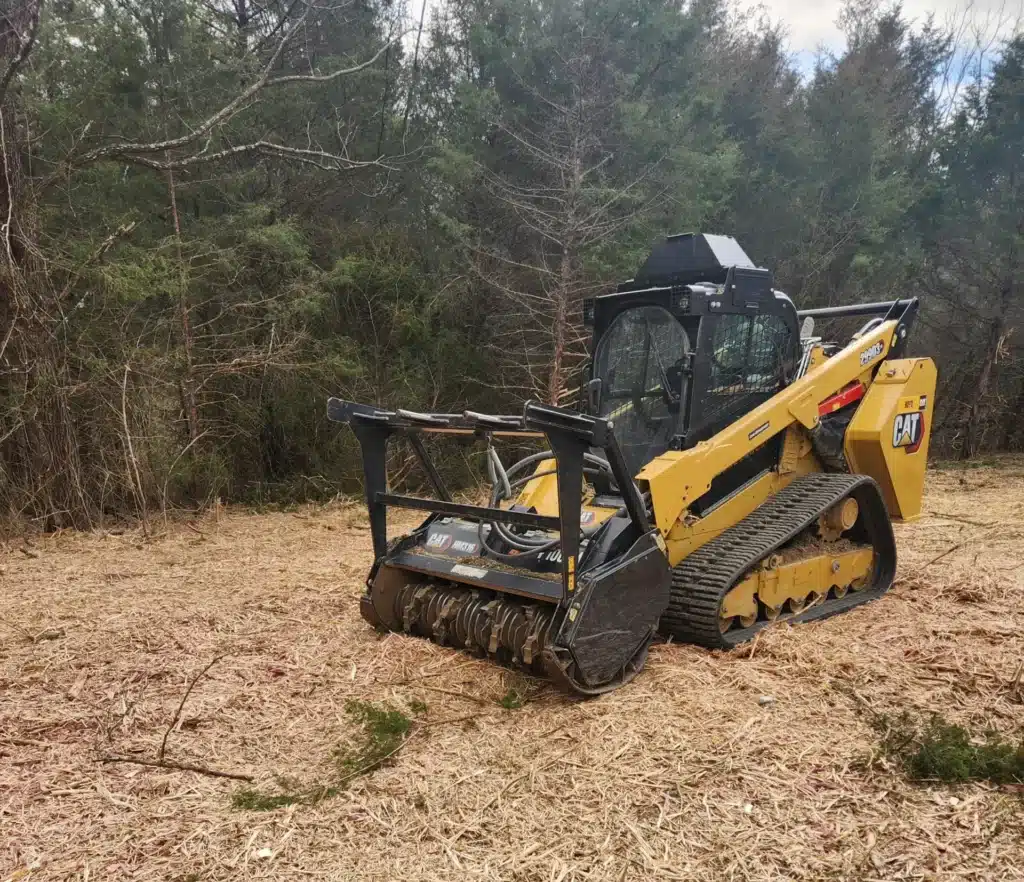Forestry mulching is an efficient, low‑impact method for reclaiming overgrown land. Rather than pushing vegetation into burn or debris piles, we shred brush, saplings, and invasives into a ground cover that protects soil, slows erosion, and supports moisture retention.
How Forestry Mulching Differs From Traditional Clearing
Conventional dozer scraping often removes topsoil, exposes subsoil to compaction or wash, and requires hauling. Mulching leaves root systems of desirable trees intact and converts biomass into an onsite resource rather than a disposal liability.
Typical Use Cases
Selective understory reduction for aesthetics and access; hunting lane creation; pasture edge reclamation; invasive species suppression; visibility and security enhancement; fire fuel load reduction; pre‑survey clearing to visualize layout without full disturbance.
Soil & Environmental Advantages
The mulch layer buffers temperature swings, slows runoff, feeds microbial life, and naturally suppresses some weed pressure. By not scalping, soil pores remain more intact, which improves future infiltration.
Workflow
We mark preservation trees, plan machine paths, execute progressive mulching passes, re‑work dense clusters for even mulch depth, smooth transition zones, and (if desired) develop a regrowth management schedule for high‑vigor species.
Limits & Expectations
Mulching eliminates above‑ground vegetation but does not excavate stumps below surface grade; structural builds still need excavation and compaction. Mulch decomposition timeline varies (roughly 12–36 months) and gradually enriches the soil profile.
Common Questions
Will stumps be completely gone? No—surface is shredded; deeper removal is an excavation add‑on.
Is mulching okay before a build? Excellent for visibility and access; final pad still requires grading.
Does mulch attract pests? Generally it improves soil health; good drainage management prevents pest habitat issues.
Will everything regrow quickly? Mulch suppresses many species initially; regrowth depends on seedbank and moisture.
Reclaim Overgrowth With Minimal Disturbance
Turn unusable thickets into functional land while protecting the soil you’ll rely on later.

